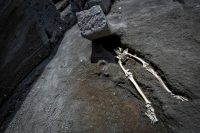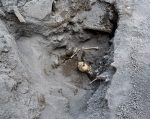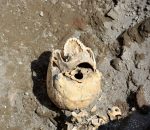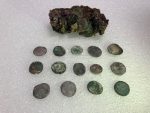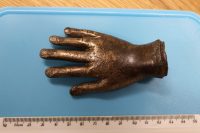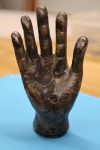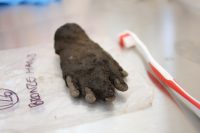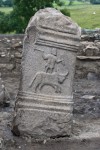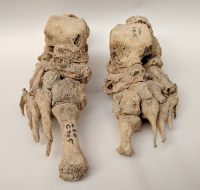The Moundville Archaeological Site near Tuscaloosa, Alabama, was the political and religious center of a Mississippian culture polity that flourished from the 11th to the 16th century. Today the park consists of 29 mounds and a large rectangular plaza which have been extensively excavated. It also includes a museum and archaeological repository. It is a National Historic Landmark and is the second largest Mississipian site after Cahokia, Illinois. one of Alabama’s most important historic sites.
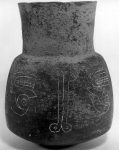 In March of 1980, thieves broke into the Erskine Ramsey Archaeological Repository on the Moundville site and made off with 264 Native American artifacts. This was a loss of eight centuries worth of pottery vessels — bottles, bowls, jars and fragments — worth an estimated $1 million in 1980, the equivalent of about $3 million today. Some of the stolen objects were, according to archaeologists, among the highest-quality artifacts ever found at Moundville, recovered during excavations in the 1930s and completely irreplaceable. The sheer quantity was devastating as well, representing one fifth of the entire Moundville pottery collection and an agonizing 70% of the museum-quality pieces. To this day, the Moundville theft is the largest recorded antiquities theft in the Southern United States.
In March of 1980, thieves broke into the Erskine Ramsey Archaeological Repository on the Moundville site and made off with 264 Native American artifacts. This was a loss of eight centuries worth of pottery vessels — bottles, bowls, jars and fragments — worth an estimated $1 million in 1980, the equivalent of about $3 million today. Some of the stolen objects were, according to archaeologists, among the highest-quality artifacts ever found at Moundville, recovered during excavations in the 1930s and completely irreplaceable. The sheer quantity was devastating as well, representing one fifth of the entire Moundville pottery collection and an agonizing 70% of the museum-quality pieces. To this day, the Moundville theft is the largest recorded antiquities theft in the Southern United States.
The theft was discovered by University of Michigan students who walked into the repository on March 6th to find boxes of artifacts lined up against the wall. Authorities suspect the thieves made several trips with boxes full of loot and had another one (or more) planned but were thwarted for some reason. The organized nature of the theft and the consistently exceptional quality of the chosen items strongly suggests that thieves were either educated in Mississippian artifacts or working with/for someone who was.
 It’s been more than 38 years and none of the 264 artifacts have been seen since, let alone recovered. Because the market for Native American objects is predominately US-based, it’s likely they’re still in the country, even after so much time has elapsed. The thefts weren’t widely publicized at the time. There was a notice posted in the Journal of Field Archaeology in 1981 and the FBI was on the case, but it’s a whole new world now when it comes to the sale of stolen antiquities. Large internet auction sites like eBay are routinely used by looters, dealers and collectors to sell goods with questionable ownership histories.
It’s been more than 38 years and none of the 264 artifacts have been seen since, let alone recovered. Because the market for Native American objects is predominately US-based, it’s likely they’re still in the country, even after so much time has elapsed. The thefts weren’t widely publicized at the time. There was a notice posted in the Journal of Field Archaeology in 1981 and the FBI was on the case, but it’s a whole new world now when it comes to the sale of stolen antiquities. Large internet auction sites like eBay are routinely used by looters, dealers and collectors to sell goods with questionable ownership histories.
In the hope that the power of the information age might be harnessed to solve this mystery, a private organization, the Associates for the Return of Moundville Artifacts, is now offering a reward of $15,000 for any information leading to the recovery of these priceless objects. They’ve established a confidential tip line (205 348-2800) for people to call with information. There’s a photo gallery of most of the stolen artifacts online here. If you see anything like them during your surfing and antiquing, please call the tip line.
